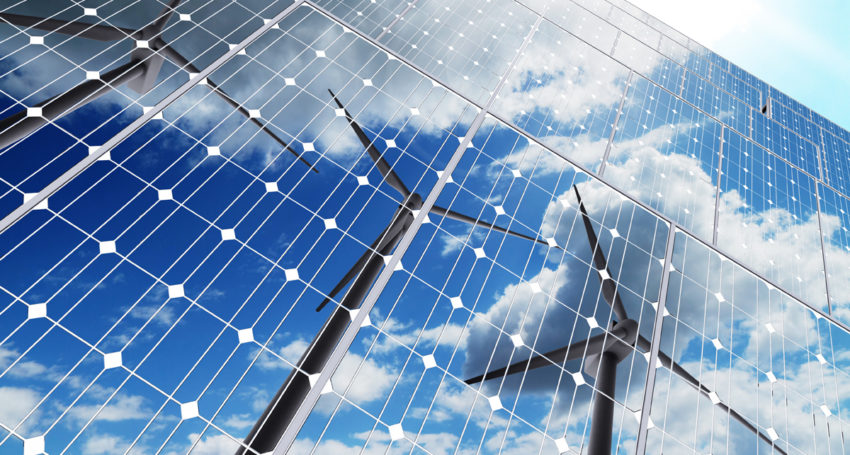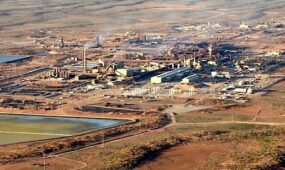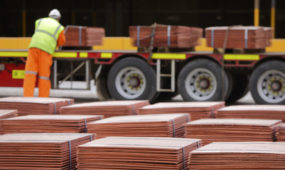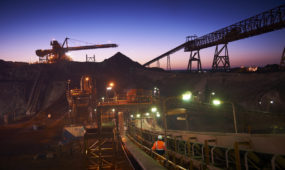South Australia looks to take lead in green hydrogen race
Mining & Resources
An Australian state with and abundance of renewable energy has unveiled a plan to become a leading global exporter of certified green hydrogen.

Sign up to receive notifications about new stories in this category.
Thank you for subscribing to story notifications.

South Australia is already a world leader in wind, solar and battery storage to the point where excess renewable energy is often shed during peak production periods.
The South Australian Government today released its Hydrogen Action Plan in a bid to use that cheap renewable energy to generate hydrogen, which can be used as fuel or to generate electricity at a later time and place.
South Australian Premier Steven Marshall used his opening address at the International Conference on Hydrogen Safety in Adelaide this morning to launch the plan.
He said while other jurisdictions were looking at non-renewable hydrogen as a steppingstone to renewable hydrogen, South Australia was well placed to move straight to certified renewable hydrogen.
“In doing so, South Australia can be a trusted, long-term trading partner who shares the values of the hydrogen economy,” Premier Marshall said.
“We are ready to go on renewable green hydrogen and to develop a clean and safe hydrogen supply chain in South Australia, which gives confidence to consumers and investors.
“Green hydrogen will fast move from being an alternative fuel to being a mainstream zero carbon fuel, becoming increasingly cost competitive with traditional generation.”
Four key hydrogen projects are already underway in South Australia, utilising $17 million in government grants and $25 million in loans. They include:
- An $11.4 million hydrogen park at the Tonsley Innovation District south of Adelaide to build a 1.25MW electrolyser as the first Australian demonstration project of its scale and size. By mid 2020 small quantities of renewable hydrogen will be produced and blended into the local gas distribution network.
- An $8.7 million facility at the University of South Australia’s Mawson Lakes campus incorporating a solar installation, flow batteries, a hydrogen fuel storage cell stack and thermal energy storage to demonstrate the value of hydrogen storage paired with other new storage technologies.
- H2U is developing a 30MW water electrolysis facility near Port Lincoln using wind and solar to generate up to 18,000 tonnes of green ammonia a year to supply local agriculture and industrial sectors. The plant will also feature two 16 MW open-cycle gas turbines operating 100 per cent on hydrogen at the site to provide electricity generation to the grid during periods of low wind or solar output.
- Neoen Australia is investigating the introduction of a 50MW hydrogen super hub to produce about 25,000kg of hydrogen a day at its proposed Crystal Brook Energy Park in the Mid North of the South Australia.
One third of South Australian homes have rooftop solar, which, when added to the state’s 22 major wind farms and three large scale solar PV producers, often supply more than 100 per cent of the state’s daytime demand. The state is also home to the world’s biggest lithium-ion battery and has more than 40 further wind and solar projects under construction or in development.
This has sparked a greater focus on energy storage and interconnection with other states.
Premier Marshall said South Australia was on track to reach 90 per cent renewable energy generation in the mid 2020s and become a net renewable energy exporter in the 2030s.
“In this scenario, storage technologies such as hydrogen are extremely attractive to our state and as a large state in area with remote communities, prospective mineral regions and long transport routes, hydrogen is an exciting, flexible fuel for the future,” he said.
“We are focused absolutely on making sure that consumers are protected and that the transition is orderly and affordable.
“We’ve heard loud and clear our traditional trading partners signalling their enormous ambitions for hydrogen and we want to deepen our existing relationships by together demonstrating and growing a hydrogen economy.”
South Australia was the first Australian jurisdiction to develop a plan to accelerate a hydrogen economy with the release in 2017 of a Hydrogen Roadmap. Last year, Australia’s national science research agency CSIRO released its National Hydrogen Roadmap and several other states have also since released their own plans.
“Since South Australia’s strategy was launched there has been considerable momentum here and internationally, now we’re ready to take the next steps to accelerate transition from a roadmap to a plan of action,” Premier Marshall said.
“We are at ground zero for this transition.”
The 2019 International Conference on Hydrogen Safety this week is the first time the event has been hosted in Australia and has attracted hundreds of delegates from 22 nations.
Australia’s Chief Scientist Dr Alan Finkel told the opening session today Australia had a proud history of using hydrogen.
In 2005, using energy from wind turbines, and through the process of electrolysis, the Australian Antarctic Division was able to generate renewable hydrogen in Antarctica and transport it in cylinders using a hydrogen-powered quad bike.
The hydrogen was then used to power the everyday activities of Australia’s Antarctic scientists on Mawson Station – fuelling cooking stoves and generating electricity to run heaters, lights and computers.
“What a staggering feat of ingenuity – proving that even in the coldest, darkest, most-hostile continent on Earth, where special materials and construction techniques are often required, hydrogen energy can be safely and effectively harnessed for human benefit,” Dr Frankel said.
“Decades of experience and continuing progress in technologies have shown that hydrogen power is reliable and secure.
“I am confident that this record can be maintained as we seek to open new frontiers and expand our energy horizons.”
The President of the International Association for Hydrogen Safety (HySafe) Stuart Hawksworth told the conference that for hydrogen to realise it’s full potential as an energy solution it needed to be seen as safe.
He said global collaboration on hydrogen safety was needed on an open international stage.
“In just the past two years, the pace at which new hydrogen technologies and hydrogen fuel applications have emerged is indicative of just how important this fuel source can be for the future, including increasing reliance on renewable energy sources,” Hawksworth said.
“Clearly, it is also a fuel with enormous clean energy export potential as countries all over the world seek to increase renewables in their total energy mix.
“However, we need to prove up our social licence around hydrogen’s safety and all the issues around that.”
Geoscience Australia’s today also released a report today showing prospective hydrogen production regions of Australia. This map showed many parts of South Australia as being highly suitable for hydrogen production and export.
Jump to next article



